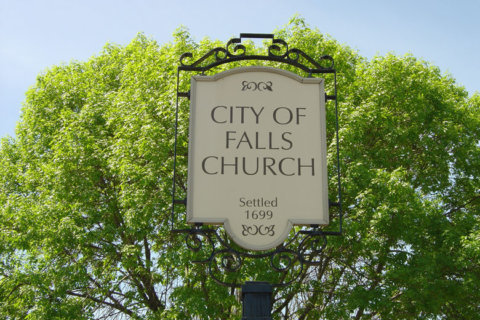The D.C. area is used to earning high marks on health ranking reports, but when it comes to the health of the air, the region is failing.
The annual State of the Air report, released by the American Lung Association on Wednesday, ranks the Washington-Baltimore region as the 16th most ozone-polluted city in the U.S. Both Arlington and Fairfax, Virginia, received an “F” for the number of high ozone days that occurred between 2015 and 2017; Loudoun County and Prince William County both got “Cs.”
In Maryland, Prince George’s County, Baltimore County and Anne Arundel County failed the ozone test; Montgomery County and Carroll County received “Ds.” The District, which had 14 high-ozone days in the three-year span, also received an “F.”
The American Lung Association’s Janice Nolen said the data analyzed in the report, which specifically looks at ozone and particle pollution levels, was collected over the world’s three warmest years on record.
“And we saw the impact of that nationwide in our air quality,” said Nolen, who is the assistant vice president of national policy at the American Lung Association. “We had a lot of cities that had more ozone; we had many cities that had more short-term particle [pollution]; and eight cities, in fact, had their worst ever levels of short-term particle [pollution].”
Ozone, often referred to as smog, is an invisible pollutant that acts as an irritant to the lungs. (Nolen likens it to a sunburn on the lungs.)
“It doesn’t come out of a tailpipe. It comes because the stuff that comes out of tailpipes cooks in the presence of sunlight and heat and forms ozone,” she said.
Particle pollution, on the other hand, is a mix of microscopic solid and liquid particles that float in the air. Its most visible form is haze on a hot day.
“These particles contain a lot of different chemicals, so they can have a lot of different reactions with the body,” Nolen said. “And they’re so tiny that they bypass the body’s natural defense systems and lodge deep in the lungs. In fact, some of them are so tiny that they can actually bypass that and go straight into the blood system.”
Both ozone and particle pollution impact human health in many ways. They can cause lung cancer and trigger asthma attacks. They can also lead to cardiovascular harm and premature death.
While ozone levels are poor in the DMV (albeit much better than measurements from 1997-1999), Nolen said the region’s particle pollution levels have improved since the last report, thanks to efforts that “cleaned up power plants” and “cleaned up diesel exhaust.” (D.C., plus Arlington and Fairfax counties received passing particle pollution grades; so did Prince George’s and Montgomery counties.)
Air pollution improvement, however, was not the case for all cities and counties included in the 2019 report. More cities had high days of ozone and more spikes of particle pollution between 2015-2017, compared to 2014-2016. Currently, 43% of Americans (more than 141 million) live in counties with unhealthy levels of ozone or particle pollution.
Despite ongoing legislative efforts to combat air pollution, Nolen said climate change is driving trends in the wrong direction.
“When you’ve got warmer temperatures, the same amount of raw ingredients that come out of tailpipes and smokestacks that create ozone in the atmosphere and sunlight, they’re more likely to form ozone because it’s warmer — warmer temperatures increase that. And it makes it harder to keep it cleaned up because it takes less to create that same amount of ozone,” she said.
Weather patterns that create droughts and dry conditions increase the risk of wildfires, which are a major contributor to particle pollution. (Four of the top five cities with the highest levels of year-round particle pollution are in California, which in 2017 experienced its most destructive wildfire season on record at the time.)
As summer approaches, Nolen said it’s important for individuals to pay attention to air quality reports before heading outside, especially at-risk individuals, including seniors, small children, and those with existing lung diseases and breathing conditions.







